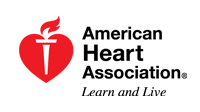
GHS HAZCOM Standard Revision 29CFR1910
Background
The Occupational Safety and Health Administration (OSHA) has revised the Hazard Communication Standard (29CFR1910.1200) to incorporate the United Nation’s Globally Harmonized System (GHS) of Classification and Labeling of hazardous chemicals. This revision will align chemical manufactures worldwide, will provide a more consistent method of chemical identification, and is being described by OSHA as “the standard that gave workers the right to know, now gives them the right to understand” (OSHAa).
This understanding is accomplished, in part, by an improvement in and standardizing of labels, and the introduction of the Safety Data Sheet (SDS), which will replace the Materials Safety Data Sheet (MSDS). The SDS will be a standardized, 16-part format, and will finally bring consistency to data reporting (OSHAb).
Effective Dates
The effective dates will be phased in over a three year period, with the first – and most relevant for end-users – of 1 December 2013. By this date, employers must train their employees on the new labeling system and the SDS. This date, in part, is because many international companies are already using the revised system (OSHAb). As a result, it is important that employees understand the revisions to these two critical elements of worker protection. For additional information on effective dates, see https://www.osha.gov/dsg/hazcom/effectivedates.html
Changes in labels and SDS
The labels will appear to be a summary of the SDS and will provide far more information than the NFPA and HMIS labels, where numbers (0-4) are the means of hazard assignment and notification. The labels will contain (from OSHAb):
1) Product identifier
2) Signal word
3) Pictogram
4) Hazard Statement
5) Precautionary statement(s)
6) Name, address and phone number of the manufacturer
An example label can be found at https://www.osha.gov/dsg/hazcom/ghs.html#4.3
The SDS will be standardized – including requiring that SDS information – such as PPE – is assigned a section (much improved over the MSDS). Additionally, four new sections have been added and they are:
Ecological information
Disposal considerations
Transport information
Regulatory information
An example of the SDS, as well as an in-depth review of their development and requirements, can be found at https://www.osha.gov/dsg/hazcom/ghs.html
Implementation and training – the backbone of the changes
In addition to the major changes discussed above, OSHA as set clear guidelines for employee training. OSHA requires that employers “present information in a manner and language that their employees can understand” (OSHAb). Included in this presentation is consideration for employees whose primary language is other than English as well as those whose “vocabulary is limited” (OSHAb).
Discussion
The revised HAZCOM Standard is, to me at least, much improved; it is the Standard that, if presented properly, can make an immediate impact to the health and safety of our employees. For those who have conducted training to the revised Standard, what type of training techniques have you used: lecture; active participation such as table-top (group) projects? For those who have not conducted training, what are your concerns or perceived barriers to a successful training session?
Please provide comments, examples, successes and failures. Remember, this blog is intended to be an interactive forum for safety- and non-safety professionals.
References cited:
Occupational Safety and Health Administration (OSHAa). Hazard Communication: The standard that gave workers the right to know, now gives them the right to understand. Retrieved from: https://www.osha.gov/dsg/hazcom/
Occupational Safety and Health Administration (OSHAb). OSHA Fact Sheet 3642 Retrieved from: https://www.osha.gov/Publications/OSHA3642.pdf
Would you like to learn more? Contact us by clicking here or click here to contact us for your free 1 hour consultation!













